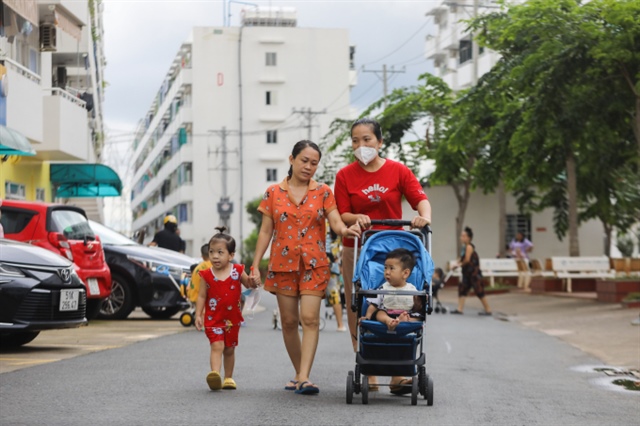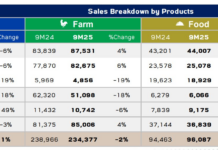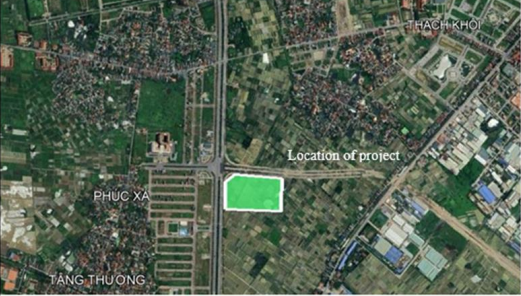According to Vietnam’s Ministry of Health, the total fertility rate has declined from 2.01 children per woman in 2022 to 1.96 in 2023, and further to 1.91 in 2024—the lowest ever recorded. Over the past two decades, more women have delayed childbirth, opting to have only one child or none at all. Alongside personal and cultural reasons, soaring housing costs have emerged as a significant barrier.
Ngoc Han, a 32-year-old office worker in Ho Chi Minh City, shares that despite her household’s monthly income of 40 million VND, she and her husband hesitate to have a second child. Expanding their family would require moving to a larger apartment with at least two bedrooms. However, such apartments in the city currently cost between 3.7 and 4 billion VND, far exceeding their financial capacity despite years of saving.
“Living in our current rented apartment with another child would be cramped, but purchasing a home is beyond our means. We’ve had to postpone our plans for a second child,” Han explains.
Similarly, Hong Hanh, a primary school teacher in Dien Hong Ward, rents a 53-square-meter apartment for 10 million VND monthly. After covering rent, living expenses, and her 3-year-old daughter’s tuition, little remains. While the family desires another child, their apartment is too small. A two-bedroom apartment costing 4–5 billion VND would require a monthly mortgage payment of 20–30 million VND, which exceeds their income.
Financial pressures from housing have intensified over the past decade. The Vietnam Real Estate Market Research Institute (VARS IRE) reports that in 2014, the average apartment price was 1.75 billion VND, equivalent to 2.6 billion VND when adjusted for inflation by mid-2025. Today, however, prices have surged to 5.3 billion VND.
In Hanoi, apartment prices rose by over 70% between 2019 and 2024, while in Ho Chi Minh City, they increased by nearly 37%. A typical apartment now costs 20–25 times the average urban household income. During this period, the total fertility rate dropped from 2.09 to 1.91 children per woman. As incomes fail to keep pace with housing costs, many families are forced to delay having children.

Life in Le Thanh An Lac social housing complex, Ho Chi Minh City. Photo: Quynh Tran |
A survey by the Ho Chi Minh City Institute for Development Studies reveals that the proportion of single-person households rose from 11% in 1999 to 14.3% in 2019. Many young people now choose to live alone rather than marry early. The institute cites economic pressures, particularly housing, education, and healthcare costs, as the primary reasons for low urban birth rates.
International research also highlights the link between housing prices and birth rates. A study by the U.S. National Bureau of Economic Research found that in urban areas, a 10% increase in housing prices reduces the birth rate among non-homeowners by 1%. Conversely, households that own homes or multiple properties tend to have children earlier due to greater financial security.
In Vietnam, there was once a period when housing prices and fertility rates rose together. Between 2001 and 2003, relaxed credit policies and strong economic growth saw the fertility rate increase from 2.12 to 2.23 children per woman. However, since 2021, as property prices have skyrocketed, birth rates have sharply declined. VARS IRE predicts that in the long term, simultaneous increases in housing prices and fertility rates are nearly impossible, as urban housing becomes a privilege for a small wealthy minority.
Nguyen Quoc Anh, Deputy General Director of Batdongsan, notes that housing has become a major obstacle for young people. With apartment prices rising far faster than incomes, homeownership rates have plummeted, leading to widespread insecurity. Many fear they cannot provide stable housing for their families, causing hesitation in having children. He emphasizes that population issues are thus closely tied to housing development policies.
This trend is not unique to Vietnam but is widespread across many Asian countries. In South Korea, where Seoul’s housing prices are among the world’s highest, the fertility rate dropped to a record low of 0.72 children per woman in 2023. Japan and Singapore face similar challenges, prompting governments to introduce housing and welfare support packages to encourage young people to marry and have children.
Economist Dinh The Hien observes that for households earning 25–30 million VND monthly, purchasing a 3–4 billion VND apartment is nearly impossible without family support. “If all financial resources are directed toward housing, couples struggle to allocate additional funds for children, leading to widespread hesitation in having children due to housing insecurity,” he explains.
Experts argue that resolving this issue requires more aggressive policies in developing social housing and affordable homes. While the government has repeatedly emphasized this goal to support urban residents, the actual supply remains severely limited. As of mid-2025, only 36,800 social housing units have been completed nationwide, just 37% of the 2025 target.
In addition to increasing the supply of affordable housing, low-interest, long-term loan packages are seen as crucial for helping young families access housing. Simultaneously, developing low-cost rental housing models and improving transportation infrastructure to reduce pressure on central areas are essential.
Experts also propose direct support policies for young families, such as first-time homebuyer loan incentives, tax reductions for families with young children, and childcare subsidies. These measures, already implemented in many countries, aim to address aging populations and encourage young people to start families.
While awaiting comprehensive policies, many urban families continue to weigh the decision between buying a home and having children. With incomes lagging behind property prices, this choice grows increasingly difficult, contributing to the historically low birth rate.
Phương Uyên
– 07:00 02/10/2025
Unveiled: Consortium of Investors Behind Hanoi’s 9.3 Trillion VND Social Housing Project
The Tiên Dương 1 social housing project, located in Phúc Thịnh commune, Hanoi, is a collaborative effort by the consortium of Viglacera, Hoàng Thành, and Central. With a total investment of over 9.3 trillion VND, this development aims to provide affordable housing solutions for the community.
Hanoi: Skyrocketing Housing Prices Push Young People’s Dream of Homeownership Further Out of Reach
The cost of apartments in Hanoi remains prohibitively high, typically ranging from 70 to 100 million VND per square meter. This makes homeownership an increasingly challenging goal for many young individuals in the city.













































